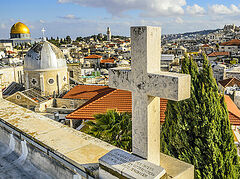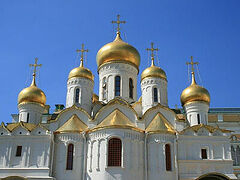Moscow, August 3, 2023
According to a new survey from the All-Russian Public Opinion Research Center, the overall percentage of Orthodox Christians has decreased in Russia in recent years, while the percentage of those who actively practice the faith is up.
There are especially fewer believers among young people, and the numerical advantage of Christians over Muslims is shrinking.
The results of the survey conducted in July show that 57% of Russians consider themselves Orthodox today, which is down 6% from 2019—a trend that has been observed over the past decades, writes RIA-Novosti.
According to religious scholar Roman Lunkin, the declining number comes from those who have identified themselves as “generally Orthodoxy” in the past—a diverse group that includes “unbelieving Orthodox” and Orthodox who don’t like the Russian Orthodox Church. He also proposed that less people are identifying themselves simply on cultural or ethnic grounds now.
Archpriest Maxim Kozlov, the chairman of the ROC’s Educational Committee believes the drop is at least partially due to the greater availability of information about the Orthodox faith: “People are starting to learn that being Orthodox means taking on more ethical obligations, restrictions in life. Someone doesn’t want to do this, so he distances himself.”
Amongst people aged 18 to 24, the portion of non-believers has grown by 5 points since 2019 to 42% today. Among 25 – 34-year-olds, there is a significant number who fluctuate between belief and unbelief or who consider themselves believers but without adherence to any specific religion (10% each).
In the country as whole, the Orthodox outnumber Muslims 57% to 5%, but amongst the youth, the ratio is only 29% to 9%, which is attributable both to changing attitudes about religion and increasing Muslim immigration to Russia. According to government statistics, 1.3 million people entered Russian to work in just the first quarter of 2023, and largely from the traditionally Muslim countries of Uzbekistan, Tajikistan, Kyrgyzstan, and Kazakhstan. 3.5 million entered throughout 2022.
At the same time, the number of young people identifying as Orthodox has grown from 23% in 2019 to 29% today.
And while the overall percentage of Orthodox may have dropped, the percentage of those who practice—who regularly go to church, receive the Sacraments, and are attached to a particular parish—is up. In 2012, the number of those who went to church at least once a month was 7%; today it is 15%.
Thus, in recent years, those who have been “affiliated with Orthodoxy” have tended to move in one of two directions: to become active practitioners, or to stop associating themselves with the faith—a trend observed across Eastern Europe.
Fr. Kozlov and Roman Lunkin suggest some practical reasons why the number of actually practicing Orthodox is up: the greater number of churches and the greater availability of services, and younger clergy who are better able to speak the “language” of the people.
Follow OrthoChristian on Twitter, Vkontakte, Telegram, WhatsApp, MeWe, and Gab!




